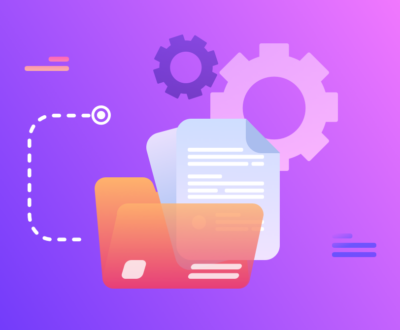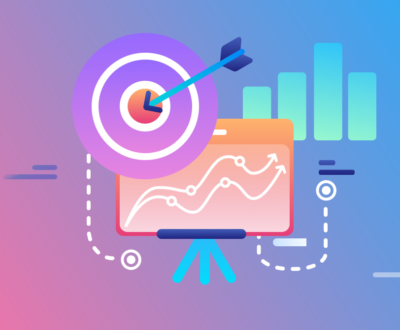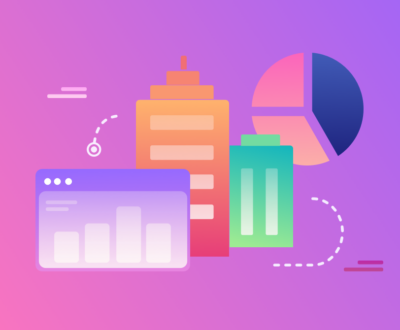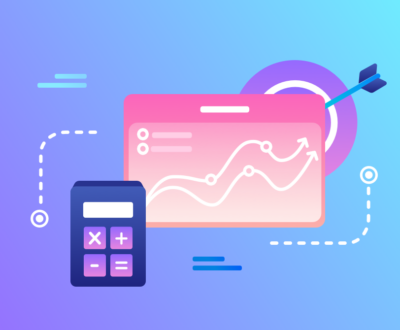What is the 7Ps Mix in Intelligence Marketing? A Comprehensive Guide
- February 11, 2025
- Uncategorized
The Power of the 7Ps Mix in Intelligence Marketing
In the fast-evolving world of marketing, businesses constantly look for ways to stay ahead of the competition and effectively engage their target audience. The 7Ps of marketing—traditionally used as a guiding framework—have evolved with the advent of digital tools and artificial intelligence (AI). The combination of the 7Ps Mix and Intelligence Marketing is shaping how companies strategize, connect, and succeed in the modern marketing landscape.
But what exactly is the 7Ps Mix in Intelligence Marketing? And why is it becoming so crucial for businesses?
In this blog post, we’ll break down the 7Ps framework, explain how it integrates with Intelligence Marketing, and explore how it helps businesses use data and AI to drive smarter decisions and more personalized customer experiences.
Table of Contents:
- What is the 7Ps Mix in Marketing?
-
- Understanding the 7Ps Framework
- A Brief History of the 7Ps Marketing Model
- The Role of Intelligence Marketing
- How Intelligence Marketing Transforms Traditional Marketing
- Key Components of Intelligence Marketing
- Integrating 7Ps with Intelligence Marketing
- The Synergy Between 7Ps and AI-Driven Insights
- Data-Driven Decision-Making in Marketing
- Exploring the 7Ps in Detail for Intelligence Marketing
- Product: Tailoring Offerings Using AI Insights
- Price: Dynamic Pricing Powered by Data
- Place: Optimizing Distribution Channels Using Analytics
- Promotion: Personalizing Promotions through AI and Big Data
- People: Customer Insights and Targeting
- Process: Streamlining Marketing Processes with AI
- Physical Evidence: Creating a Consistent Brand Experience
- How Does AI Enhance the 7Ps Mix in Marketing?
- The Role of Machine Learning and Data Analytics
- Predictive Analytics in Marketing Campaigns
- Automating Customer Interactions with AI Tools
- Case Study: Success Stories of 7Ps Mix in Intelligence Marketing
- Example 1: AI-Powered Product Personalization
- Example 2: Dynamic Pricing in Action
- Example 3: Optimizing Customer Touchpoints with AI
- Challenges in Implementing the 7Ps Mix with Intelligence Marketing
- Overcoming Data Privacy Concerns
- Managing Customer Expectations with AI
- Balancing Human Creativity with AI Automation
- The Future of 7Ps Mix and Intelligence Marketing
- Emerging Trends in AI and Marketing
- How Companies Can Prepare for Future Challenges
- Conclusion: Unlocking Marketing Success with the 7Ps and AI
- FAQs: Common Questions about the 7Ps Mix and Intelligence Marketing
-
What is the 7Ps Mix in Marketing?
Understanding the 7Ps Framework
The 7Ps Mix is a widely used model that defines the essential elements for a successful marketing strategy. E. Jerome McCarthy initially created it in the early 1960s, and traditionally includes the following elements:
- Product
- Price
- Place
- Promotion
- People
- Process
- Physical Evidence
A Brief History of the 7Ps Marketing Model
Originally designed for product-based businesses, the 7Ps model has evolved to apply to services and digital products, creating a more comprehensive view of marketing. As businesses and technology have advanced, the 7Ps framework continues to be an invaluable tool for marketers seeking a holistic strategy.
-
The Role of Intelligence Marketing
How Intelligence Marketing Transforms Traditional Marketing
Intelligence Marketing refers to the use of data-driven insights, AI technologies, and machine learning to optimize marketing efforts. It leverages big data, customer behaviors, and predictive analytics to create smarter, more personalized marketing campaigns that are highly targeted and more effective than traditional marketing strategies.
Key Components of Intelligence Marketing
The foundation of Intelligence Marketing includes:
- Customer Data Analytics: Gathering and analyzing customer behavior and preferences.
- Artificial Intelligence: AI-driven automation tools to optimize marketing efforts.
- Predictive Insights: Using data to predict future trends and customer actions.
-
Integrating 7Ps with Intelligence Marketing
The Synergy Between 7Ps and AI-Driven Insights
By integrating the 7Ps framework with Intelligence Marketing, businesses can take advantage of advanced technologies and data analysis to optimize each element of the 7Ps for better results. AI tools can help refine decisions related to product design, pricing strategies, customer engagement, and marketing processes—making marketing campaigns more personalized, efficient, and impactful.
Data-Driven Decision-Making in Marketing
Intelligence Marketing empowers marketers to use real-time data, customer interactions, and market trends to make informed decisions across the 7Ps. Whether adjusting the price of a product dynamically based on demand or predicting the best time to send a promotional offer, AI and data analytics ensure that marketing decisions are always based on actionable insights.
-
Exploring the 7Ps in Detail for Intelligence Marketing
Product: Tailoring Offerings Using AI Insights
AI enables businesses to personalize products and services based on consumer preferences and data analysis. From customizing product features to introducing new offerings that align with customer demand, AI plays a critical role in creating a product that resonates with the target market.
Price: Dynamic Pricing Powered by Data
Intelligence Marketing helps businesses optimize pricing strategies. It uses AI to determine the right price point based on factors like competitor pricing, demand, and consumer behavior. By analyzing real-time data, AI can adjust pricing dynamically to maximize revenue.
Place: Optimizing Distribution Channels Using Analytics
Using data-driven insights, businesses can optimize their distribution strategies by identifying where and how customers prefer to make purchases. This could involve tweaking online channels, physical store placements, or even e-commerce logistics.
Promotion: Personalizing Promotions through AI and Big Data
AI helps businesses craft personalized promotions by analyzing customer data and segmenting audiences more effectively. From targeted ads to personalized email marketing, businesses can ensure they are reaching the right customers at the right time with the most relevant offers.
People: Customer Insights and Targeting
AI-driven marketing provides deep insights into customer behavior, helping companies improve customer targeting. Behavioral analysis can predict what motivates a customer to make a purchase, enabling better-targeted campaigns.
Process: Streamlining Marketing Processes with AI
AI and automation tools help streamline marketing processes, from content creation to customer service. Automation reduces human error and ensures campaigns are executed efficiently, leaving marketers with more time to focus on strategy.
Physical Evidence: Creating a Consistent Brand Experience
AI can help businesses maintain consistent brand experiences across various customer touchpoints by tracking customer interactions and ensuring that the messaging, tone, and style remain cohesive.
-
How Does AI Enhance the 7Ps Mix in Marketing?
The Role of Machine Learning and Data Analytics
Machine learning algorithms process vast amounts of data, uncovering hidden insights that guide the 7Ps marketing decisions. By predicting consumer behavior, businesses can craft highly personalized marketing efforts that increase engagement.
Predictive Analytics in Marketing Campaigns
Predictive analytics allows businesses to forecast the success of marketing campaigns before they launch, adjusting strategies for maximum ROI.
Automating Customer Interactions with AI Tools
AI-powered tools like chatbots and automated email responses enhance customer interaction, providing instant support and personalized content.
-
Case Study: Success Stories of 7Ps Mix in Intelligence Marketing
Example 1: AI-Powered Product Personalization
A leading online retailer uses AI algorithms to analyze customer purchase history and preferences. Based on this data, they recommend personalized product suggestions, significantly increasing conversion rates.
Example 2: Dynamic Pricing in Action
An airline uses AI to dynamically adjust ticket prices based on real-time demand, competitor pricing, and historical data. This ensures they maximize revenue while providing competitive pricing.
Example 3: Optimizing Customer Touchpoints with AI
A global beverage brand uses AI to track customer interactions across digital platforms, providing personalized promotions that are more likely to convert, ultimately improving customer retention.
-
Challenges in Implementing the 7Ps Mix with Intelligence Marketing
Overcoming Data Privacy Concerns
With more data comes greater responsibility. Businesses must ensure they comply with data privacy laws (such as GDPR) and protect customer information.
Managing Customer Expectations with AI
As AI becomes more embedded in marketing, customers may expect increasingly personalized experiences, making it challenging for businesses to meet those expectations consistently.
Balancing Human Creativity with AI Automation
While AI can optimize many aspects of marketing, the creative and human elements of marketing still play a vital role in developing authentic, engaging campaigns.
-
The Future of 7Ps Mix and Intelligence Marketing
Emerging Trends in AI and Marketing
The future of marketing is bright, with emerging AI technologies enabling even more personalized, real-time, and predictive marketing strategies. Companies must stay updated with these trends to remain competitive.
About us and this blog
We are a digital marketing company with a focus on helping our customers achieve great results across several key areas.
Request a free quote
We offer professional SEO services that help websites increase their organic search score drastically in order to compete for the highest rankings even when it comes to highly competitive keywords.
Subscribe to our newsletter!
More from our blog
See all postsRecent Posts
- What is the 7Ps Mix in Intelligence Marketing? A Comprehensive Guide February 11, 2025
- Is Search Engine Submission Necessary? April 17, 2014
- Can Any Inbound Linking Hurt My Ranking? April 17, 2014







